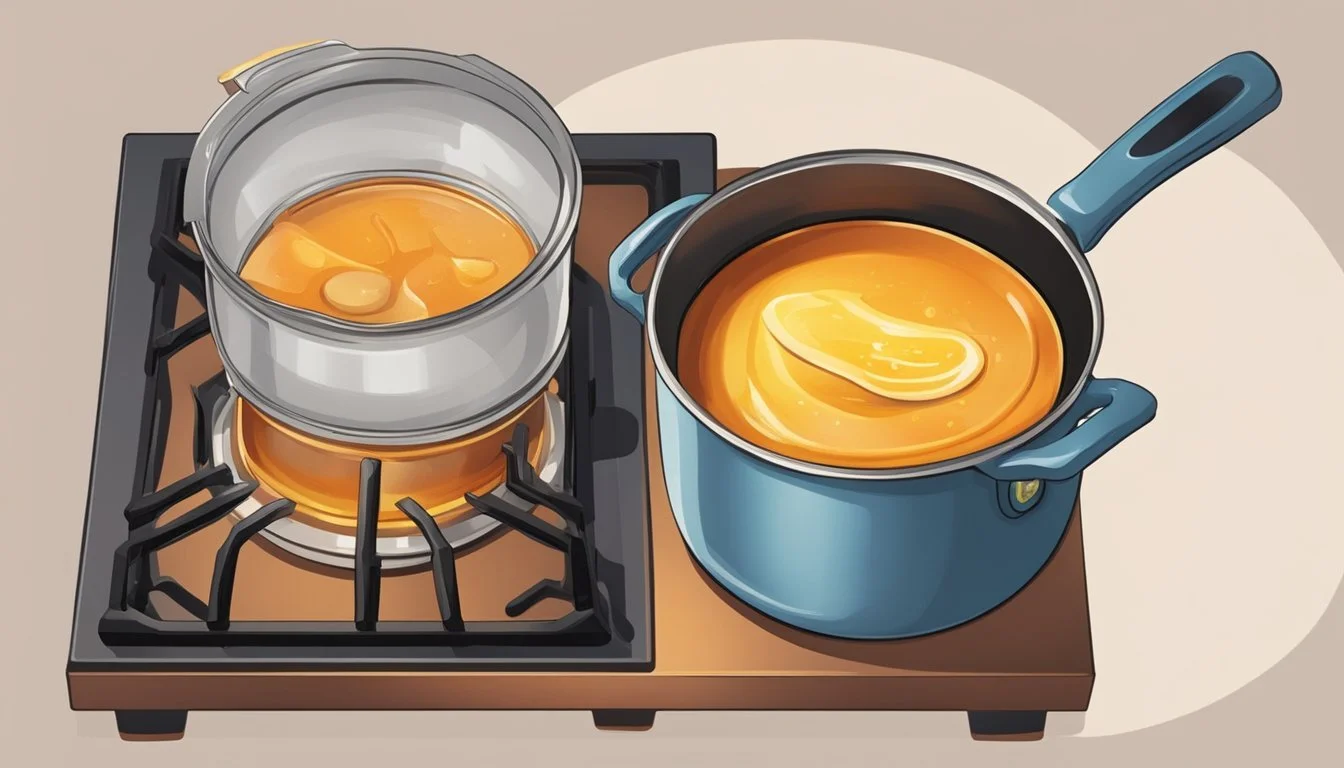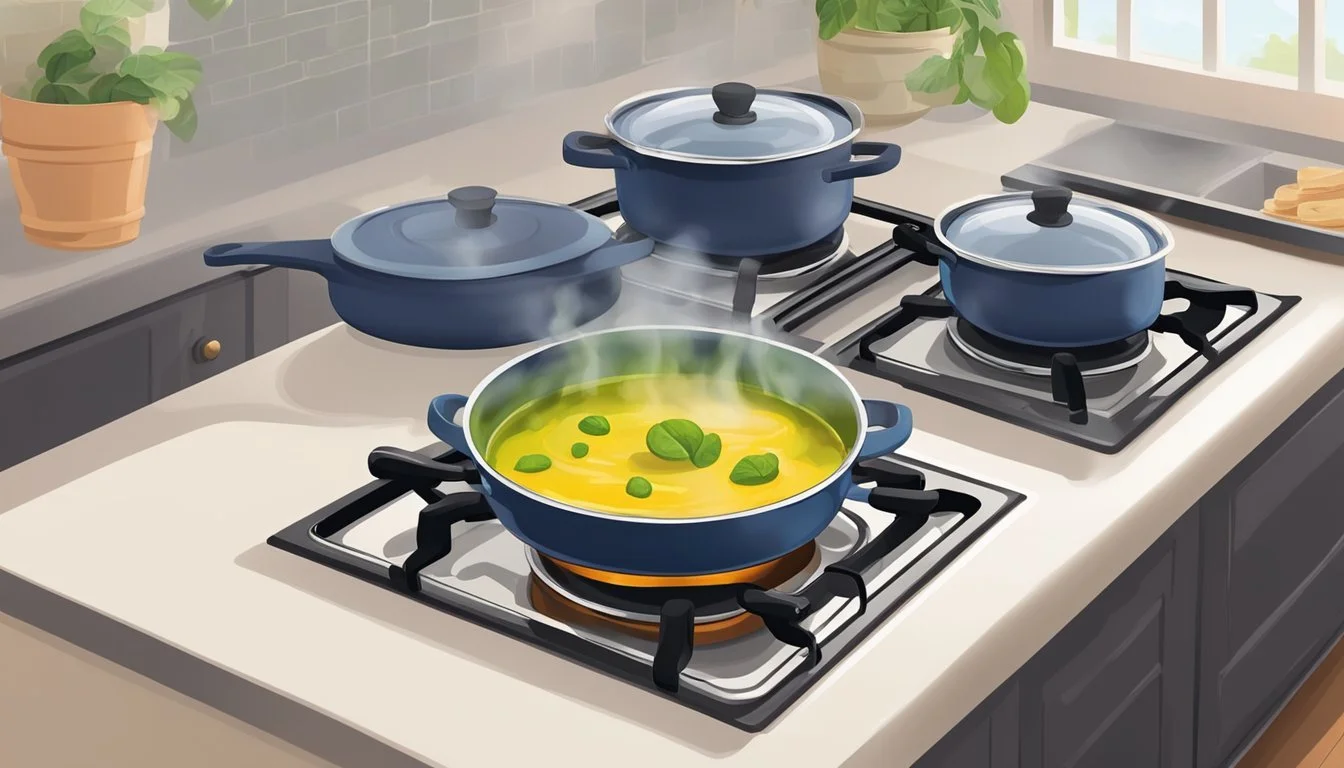Best Way to Reheat Zhug
Ensuring Flavorful and Silky Consistency
Zhug, a vibrant and zesty Yemeni hot sauce, is a versatile condiment treasured for its ability to elevate the flavor profiles of myriad dishes. Its bold combination of fresh herbs, garlic, spices, and chili peppers makes it an indispensable kitchen staple for those who favor heat with character. However, given its fresh ingredients, retaining the sauce’s bright flavors and smooth texture upon reheating is crucial to ensure that its integrity isn't compromised.
The key to reheating zhug effectively lies in understanding the delicate balance of its components. The sauce’s flavor is anchored on the freshness of cilantro and parsley as well as the aromatic quality of spices like cumin and coriander. Gentle reheating can help preserve these elements. Consistency, on the other hand, can be maintained by avoiding methods that might cause the sauce to separate or become grainy.
Understanding Zhug
Zhug is a vibrant and fiery Yemeni condiment that has a rich cultural heritage and is versatile in its usage. Traditionally made from fresh herbs, spices, and garlic, it comes in two primary variations that appeal to different palates.
Origins and Cultural Significance
Zhug originated in Yemen, where it holds a special place in the nation's culinary tradition. This hot sauce signified the spicy component of Middle Eastern flavors, rooted deeply in Yemenite history, and has now spread across the globe due to its distinctive taste and the migration of Yemeni communities. It is synonymous with Yemeni culture, often found accompanying a variety of dishes, celebrating the rich tapestry of flavors that Middle Eastern cuisine has to offer.
Key Ingredients in Zhug
The foundation of zhug's flavor profile lies in a few key ingredients:
Fresh herbs: Primarily cilantro, often accompanied by parsley.
Garlic: A crucial component that adds pungency.
Spices: A blend that usually includes cumin, coriander, cardamom, and hot peppers for heat.
This concoction is not just about spice; it's a harmony of flavors that are grounded in the freshness of the herbs and the earthiness of the spices.
Variations: Green Zhug vs. Red Zhug
In the exploration of zhug, one will encounter mainly two types:
Green Zhug: This version is made with green hot peppers, a plethora of cilantro, and other spices that result in a vibrant green color.
Red Zhug: Red zhug incorporates red hot peppers for a different level of heat and a reddish hue.
While both are integral to Yemeni and Middle Eastern culinary practices, the choice between green and red often comes down to the desired level of spice and the type of dish it is intended to accompany.
Preparation Before Reheating
Before reheating Zhug, it is essential to ensure that the sauce has maintained its quality and that it is brought to the right temperature to preserve its robust flavors and smooth texture.
Assessing Quality and Freshness
One should first examine the Zhug for signs of spoilage before deciding to reheat it. Zhug that has been stored in the refrigerator should appear vibrant and smell fresh. Visual and olfactory cues are key; any discoloration, unpleasant odor, or signs of mold formation indicate that the Zhug is no longer safe for consumption and should be discarded. If the Zhug is stored in a jar, ensure the seal has remained intact to avoid any contamination.
Bringing Zhug to Room Temperature
For optimal reheating results, one must bring the Zhug to room temperature. Removing the sauce from the refrigerator and allowing it to sit out for approximately 15-30 minutes will minimize temperature shock when reheated, helping to retain a smooth consistency. It's important not to skip this step, as sudden changes in temperature can adversely affect the texture and flavor of the Zhug.
Reheating Techniques
To fully enjoy zhug, one should reheat it in a way that preserves its vibrant flavor and smooth texture. The following methods cater to these aspects, focusing selectively on suitable heat levels and the prevention of texture alteration. Adding a touch of olive oil can help restore the zhug's freshness after reheating.
Stovetop Method
The stovetop method provides control over the heat level, which is crucial to prevent the zhug from losing its bright flavors. To reheat zhug on the stovetop:
Place zhug in a small saucepan.
Add a drizzle of olive oil to maintain the sauce's moisture.
Heat over low flame, stirring occasionally until just warmed through.
Microwave Method
Reheating zhug in a microwave is quick, though caution must be taken to avoid overheating:
Transfer zhug to a microwave-safe container.
Drizzle with olive oil to keep the texture smooth.
Heat in short intervals of 10-20 seconds on medium power, stirring in between each interval to distribute the heat evenly.
Water Bath Method
The water bath method gently reheats zhug to safeguard its texture and flavor without direct contact with heat:
Place zhug in a heatproof bowl.
Sit the bowl in a larger pan filled with simmering water, ensuring no water gets into the zhug.
Stir occasionally and allow it to warm through gently, monitoring that the water does not boil vigorously.
Maintaining Flavor and Consistency
When reheating Zhug, preserving its vibrant flavor and smooth texture is paramount. The reader must give careful attention to the type of oil used and adjustments to spices which can significantly affect the final outcome.
Oil Selection and Its Impact
Selecting the right oil influences both the flavor and consistency of Zhug. Olive oil is traditionally favored for its richness and health benefits, and it contributes to a smoother texture. Reheating Zhug with olive oil can help maintain its inherent flavors. One must use a low heat to avoid altering the oil's taste and stability.
Adjusting Spices After Reheating
Spices, such as cumin and coriander, are essential to Zhug's profile, and their flavors may change upon reheating. It is important to taste and adjust spices after reheating to ensure the desired intensity. Additionally, a pinch of salt can help to enhance the flavors, and a splash of lemon juice may be added to preserve brightness. If the garlicky flavor has mellowed, one might consider incorporating a small amount of fresh garlic to rejuvenate the sauce's punch.
Serving and Pairing Zhug
When serving zhug, the vibrant Yemeni hot sauce, its bold flavors and rich heritage should be taken into consideration to best pair and complement a variety of dishes.
Best Foods to Complement Zhug
Zhug's fiery nature makes it a versatile condiment. Here's a list of foods that pair exceptionally well with zhug:
Grilled Meats: (What wine goes well with grilled meats?) The smoky flavor of grilled meats finds a perfect match in the spicy, herbaceous notes of zhug.
Falafel: A dollop of zhug can transform a simple falafel ball into a culinary delight.
Sandwiches: Spread zhug on sandwiches for an instant flavor upgrade.
Eggs: Whether scrambled or fried, a spoon of zhug brings eggs to life with a spicy twist.
Hummus: Swirling zhug into hummus adds color and a kick of heat that enhances the creamy dip.
Creative Ways to Use Zhug in Meals
Zhug's application in meals can go beyond the typical uses. Here are some inventive ways to include zhug in everyday cooking:
With Meat Marinades: Incorporate zhug into marinades to infuse meat with its intense flavors before cooking.
As a Salad Dressing Base: Mix with olive oil and lemon juice for a zesty salad dressing.
To Spice up Soups: A few drops in soups can significantly brighten the dish.
As a Pizza Topping: For a twist on traditional pizza, add a swirl of zhug on top before serving.
Storage Tips for Zhug
Preserving the robust flavors and smooth texture of zhug requires understanding the nuances of proper storage. Whether it's a short-term fix or for long-lasting enjoyment, the container used and the environment it’s stored in play pivotal roles.
Short-Term vs. Long-Term Storage
Short-Term:
For use within a week, zhug should be stored in the fridge.
The sauce should remain vibrantly green and flavorful when chilled.
Long-Term:
For extended storage, zhug can be kept in the fridge for up to a month.
For even longer periods, zhug freezes well, maintaining its quality for 2-3 months when properly stored.
Containers and Preservation
Sealed Container:
Always store zhug in a sealed container to protect it from fridge odors and contamination.
Airtight Container:
An airtight container is optimal to maintain freshness and prevent drying out.
Containers made of glass or food-grade plastic with tight-fitting lids are recommended.
By adhering to these guidelines, zhug's integrity is maintained, ensuring a delectable addition to meals whenever desired.
Health Considerations and Nutritional Value
When considering the health implications and nutritional content of zhug, a Yemeni hot sauce, it is crucial to look at the benefits offered by its primary ingredients, as well as its overall caloric and nutritional profile. This section delves into the specific advantages that the components of zhug may bring to one's diet, alongside an analysis of its nutritional data.
Benefits of Ingredients Used in Zhug
Zhug composes a range of spices and fresh ingredients such as cilantro, garlic, and peppers, each contributing to health in unique ways:
Cilantro: Rich in antioxidants, it helps combat inflammation in the body. Cilantro can also aid in digestion and may have antimicrobial properties.
Garlic: Known for its beneficial effects on cardiovascular health, garlic improves cholesterol levels and blood pressure, and possesses strong antibacterial and antiviral properties.
Peppers: The capsaicin in peppers is shown to boost metabolism, promote healthy weight, and alleviate pain. They are also a good source of vitamin C and other antioxidants.
Each ingredient is not only flavorful but also aligns with a healthy diet when consumed in moderation.
Caloric and Nutritional Information
Zhug’s nutritional value is predominantly dictated by its core ingredients. Here is a basic breakdown of its nutritional content per tablespoon:
Nutrient Amount Calories ~25 Total Fat ~1g Saturated Fat ~0g Cholesterol ~0mg Sodium ~120mg Total Carbohydrate ~3g Dietary Fiber ~1g Sugars ~1g Protein ~1g Vitamin A Varied Vitamin C Varied Calcium Varied Iron Varied
It's important to note that zhug is typically consumed in small amounts due to its potent flavor and spiciness, which means it adds a minimal calorie increase to meals. However, its rich blend of spices and herbs contributes to its overall nutritional value, making it a health-conscious addition to any dish.
Making Homemade Zhug
Creating homemade Zhug involves a blend of fresh ingredients and spices, traditionally ground to a perfect consistency to enhance its flavors. Mastery of the zhug recipe guarantees a condiment that is both vibrant and versatile.
Required Tools and Ingredients
One needs a food processor or a mortar and pestle for grinding and blending the ingredients. A spice mill may also be necessary if whole spices are used. The core ingredients for zhug typically include:
Fresh hot green peppers (e.g., serrano or jalapeño)
Garlic cloves
Fresh cilantro
Fresh parsley
Ground cardamom
Ground coriander
Salt to taste
Olive oil
For a more authentic taste, one can start with whole cumin, coriander, and cardamom seeds and grind them.
Step-by-Step Zhug Recipe
Step 1: If using whole spices, grind the peppercorns, cumin seeds, coriander seeds, and cardamom seeds to a coarse powder with a mortar and pestle or spice mill.
Step 2: Combine the ground spices in a food processor with the garlic cloves, fresh hot peppers, cilantro, parsley, and salt. Pulse the ingredients until they begin to break down.
Step 3: While pulsing, gradually add olive oil until the mixture reaches a paste-like consistency.
Step 4: Taste and adjust seasoning. If a smoother texture is preferred, continue to process until desired consistency is achieved.
It is important to handle peppers with care and adjust the quantity to taste, as zhug's spiciness can vary greatly.
Frequently Asked Questions
When it comes to reheating Zhug, ensuring peak flavor and texture involves understanding how to adjust heat levels and making appropriate substitutions for dietary needs.
Altering Heat and Spice Levels
Q: How can one reduce the spiciness of Zhug?
A: To reduce the heat, one can gradually add neutral-flavored oil while reheating, tasting periodically. It's also effective to mix in a mild ingredient such as yogurt, if not restricted by dietary rules.
Q: Can the spice level be increased when reheating?
A: Absolutely. Intensify the spiciness by adding a pinch of kosher salt or extra minced chili peppers in small increments to control the heat adjustment.
Replacing Ingredients for Dietary Restrictions
Q: What are the common substitutions for Zhug ingredients to address dietary concerns?
A: Key substitutions often include:
For a gluten-free diet: Ensure that any added thickening agents are gluten-free.
For allergies: Replace ingredients like garlic with asafoetida powder in small quantities, considering the potent flavor.
For a vegetarian or vegan diet: Use plant-based yogurt when diluting the sauce's spiciness.
Q: Are there oil alternatives for Zhug to cater to different diets?
A: Olive oil is a healthy choice and is usually well-suited for most diets, including kosher and vegan. However, for those with specific allergies, avocado or grapeseed oil can be good alternatives.







